Hello there! I’m Riley Johnson, and if there’s one thing that rivals my passion for the great outdoors, it’s sharing the insights I’ve gathered over 8 years of dedicated camping across various terrains.
With a keen eye for detail and a relentless pursuit for the best gear, I’ve honed my expertise in evaluating camping equipment for both reliability and performance.
Today, I’m excited to guide you through the best backpacking stoves, the essential companions that have fueled my adventures and cooked up countless trailside meals, you can find on the market. Without further ado, let us begin. These are my top picks:
- Jetboil Genesis – Best Overall
- Eureka Ignite Portable – Best Budget
- Primus Multi Stove – Best for Innovation
- SOTO Fusion – Best for Cold-Weather
- SOTO WindMaster – Best for Durability
- Primus Express Spider – Best Ultralight
- Camp Chef Mountain – Best Solo Stove
1. Jetboil Genesis
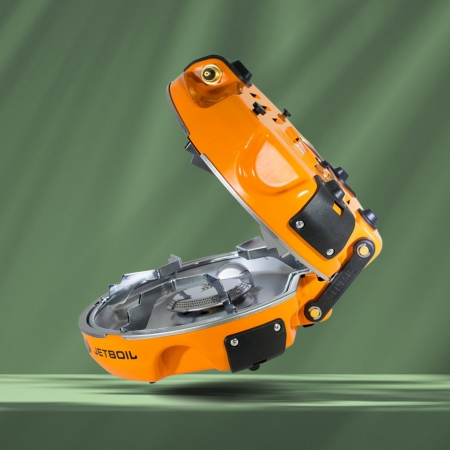
Jetboil Genesis has redefined my outdoor cooking with its compact design. Folding neatly into a small, portable form, it has made packing a breeze. The efficiency of the system is remarkable; it boils water in just over three minutes, which is impressive for its size.
Durability is a key factor when I’m miles away from civilization, and Genesis doesn’t disappoint. The rugged construction withstands the rigors of the outdoors. The level of flame control is a pleasant surprise, providing a range from a simmer to a full boil with a simple twist.
The ease of use is another aspect where the Genesis stands out. The setup is intuitive, and the igniter has been reliable every time. I’ve found the cleaning process to be straightforward as well, which is a relief after a long day of hiking.
Key Features
- Functions as a standalone stove or can be coupled with other Jet link-compatible.
- Boasts a powerful 10,000 BTU heating system capable of boiling water.
- Designed specifically for Jetboil’s versatile line of cookware.
- Comes with an attachable windscreen that improves the system’s performance.
- Includes a system carrying bag with a pocket for the regulator.
- Compatible with standard 16.4-ounce propane bottles.
- The stove weighs 6.2 pounds.
- Compact and portable
- Fast boiling time
- Precise flame control
- Durable build
- Easy to clean
- Limited to two burners
- Higher price point
2. Eureka Ignite Portable
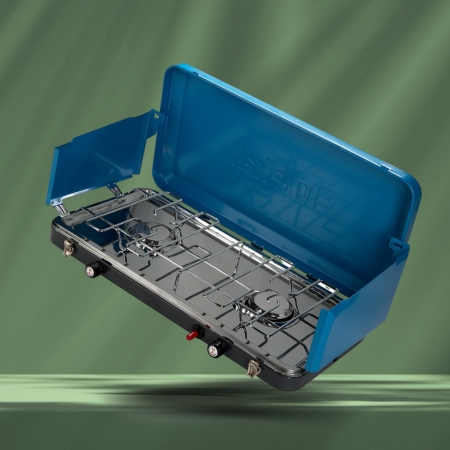
It’s not every day that you come across an outdoor cooking solution that balances functionality with aesthetics so well, and Eureka Ignite Portable does just that. The setup was a breeze, and within minutes, I was ready to start cooking.
The ignition system worked flawlessly, providing a quick and powerful flame. As someone who enjoys the flavors of home-cooked meals even while camping, the Eureka Ignite Portable has been a game-changer.
The two burners offer ample space to cook multiple items simultaneously, which is a significant plus. The flame control is precise, allowing me to simmer a sauce on one burner while boiling water on the other without any issues.
The performance remained consistent, whether I was whipping up a quick breakfast or preparing a more elaborate dinner under the stars.
Key Features
- Efficiently cook with two separate burners.
- For easy and quick lighting.
- Fine-tune cooking temperatures with ease.
- Connect to other Eureka! stoves and accessories.
- Designed for durability and long-term use.
- Ensures consistent performance.
- Simplifies transport and storage.
- Compact and portable
- Precise flame control
- Easy to clean
- Durable build
- Aesthetically pleasing
- Limited to two burners
3. Primus Multi Stove
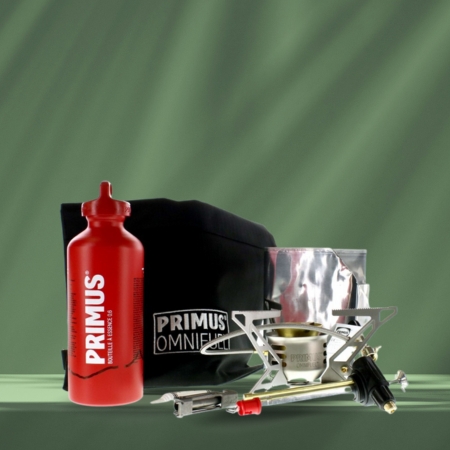
During a recent camping trip with my family, I had the opportunity to test out the Primus OmniFuel Stove. This piece of gear turned out to be a reliable companion in the great outdoors. Its versatility was the first thing that struck me; the stove is compatible with a wide range of fuels.
This adaptability was incredibly convenient, as we weren’t limited by the type of fuel we could find on our journey. It withstood the variable conditions of our high-altitude campsite with ease. Despite the wind and cold, it fired up without hesitation, providing a steady and powerful heat source for cooking meals and boiling water.
Its performance didn’t falter, even when we were dealing with near-freezing temperatures. What I appreciated most was the lightweight design. At less than half a pound, it didn’t add any noticeable weight to my pack, which is a significant plus for any backpacker looking to minimize their load.
Key Features
- Can use Isobutane, white gas, petrol, diesel, kerosene, aviation fuel
- Robust and reliable for demanding conditions
- Lightweight design, weighing less than half a pound
- Includes ErgoPump and refillable fuel bottle
- Award-winning performance with a Limited 1-Year Warranty
- Versatile fuel use
- Extremely robust
- Complete set provided
- Pricey
4. SOTO Fusion
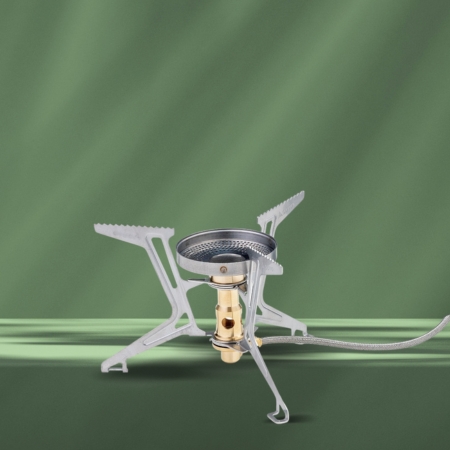
SOTO Fusion’s design is immediately noticeable, making it a negligible addition to my backpack. The first time I used it, the ease of setup was impressive; the detachable feature meant I could get it ready for use in no time.
The three-legged design of the SOTO Fusion Trek contributes to its stability, which I found reassuring when cooking on uneven ground. The wind resistance is another aspect I tested; the stove maintained a consistent flame even in breezy conditions, which is a testament to the concave burner head design.
Key Features
- Lightweight design for easy portability
- Flame control knob for safe and precise heat adjustment
- Three-legged design for stability on uneven surfaces
- Wind-resistant burner head for performance in adverse conditions
- Micro regulator maintains consistent flame in cold weather
- Compact and detachable
- Easy to set up
- Efficient fuel usage
- Durable construction
- Versatile for various cookware
- Non-returnable
- Hose flexibility
5. SOTO WindMaster
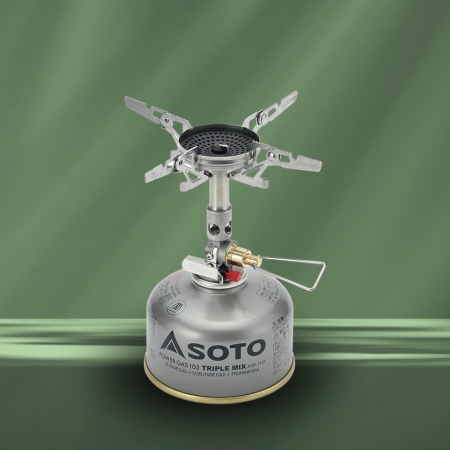
Setting SOTO WindMaster up was a breeze, and I was impressed by how quickly it boiled water, thanks to its powerful flame and wind-resistant capabilities. In the field, the WindMaster truly shined. It held up against gusty mountain winds, a testament to its name.
The four-flex pot support system was a game-changer, providing stability for my cookware. I did notice that in extremely cold weather, the performance dipped slightly, taking a bit longer to cook my meals. My experience with the WindMaster was positive.
It’s a reliable companion for lightweight backpacking trips, and its efficiency in fuel consumption is commendable. While it’s not without its quirks, such as the slight struggle in colder temperatures, it’s a piece of equipment that I’ve grown to trust.
Key Features
- Micro-regulator system for consistent output
- Integrated windscreen for improved efficiency in windy conditions
- Durable construction suitable for outdoor use
- Compatible with a variety of pot sizes
- High power output for quick boiling times
- Simple and reliable ignition system
- Wind-resistant
- Lightweight
- Fast boil time
- Efficient fuel usage
- Slower in cold
- Pricey
6. Primus Express Spider
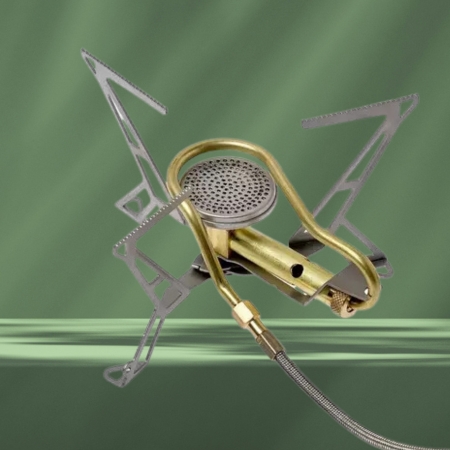
My experience with the Primus Express Spider II has been a journey of highs and lows. This compact cooking companion has accompanied me on several outdoor adventuress. Initially, I was drawn to its lightweight design, which made it an effortless addition to my backpack.
Primus Express Spider II proved its worth by boiling water with impressive speed, a testament to its high efficiency. The flame control was precise, offering a range from a gentle simmer to a roaring boil with a simple twist.
Durability is a strong suit for this model. It withstood the rigors of outdoor use with ease. Overall, while it’s not without its quirks, the Primus Express Spider II has been a generally enjoyable piece of gear that I would consider for future excursions.
Key Features
- Compact and lightweight for easy transport
- High-efficiency burner for quick cooking and boiling
- Adjustable flame control for precise heat management
- Durable construction for rugged outdoor use
- Simple setup for quick operation
- Compatible with a variety of fuel types for versatility
- Fast water boiling
- Precise flame control
- Lightweight and portable
- Heat reflector included
- Flame too focused
- Can be tricky with liquid fuel
7. Camp Chef Mountain
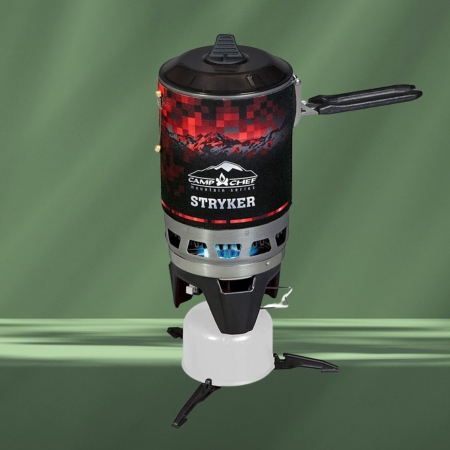
In the field, my experiences with Camp Chef Mountain were mixed. The unit ignited quickly, and the heat output was impressive, boiling water in a matter of minutes. This efficiency was a highlight during early morning starts. Still, I found the flame control less precise than I desired, making it challenging to cook meals that required a delicate touch.
After several uses, I concluded that while the Stryker wasn’t the perfect match for my particular needs, which lean towards gourmet camp cooking, its robust build and rapid heating capability could be ideal for hikers and campers focused on dehydrated meals or quick brews.
Key Features
- Engineered to increase efficiency by 30%.
- Optimized fuel consumption
- A hassle-free start to cooking
- Easy to carry on any adventure.
- The stove’s insulated pot.
- Lightweight
- Quick boil time
- Wind-resistant design
- Matchless ignition
- Efficient fuel usage
- Limited flame control
- Not for gourmet cooking
Buyer’s Guide
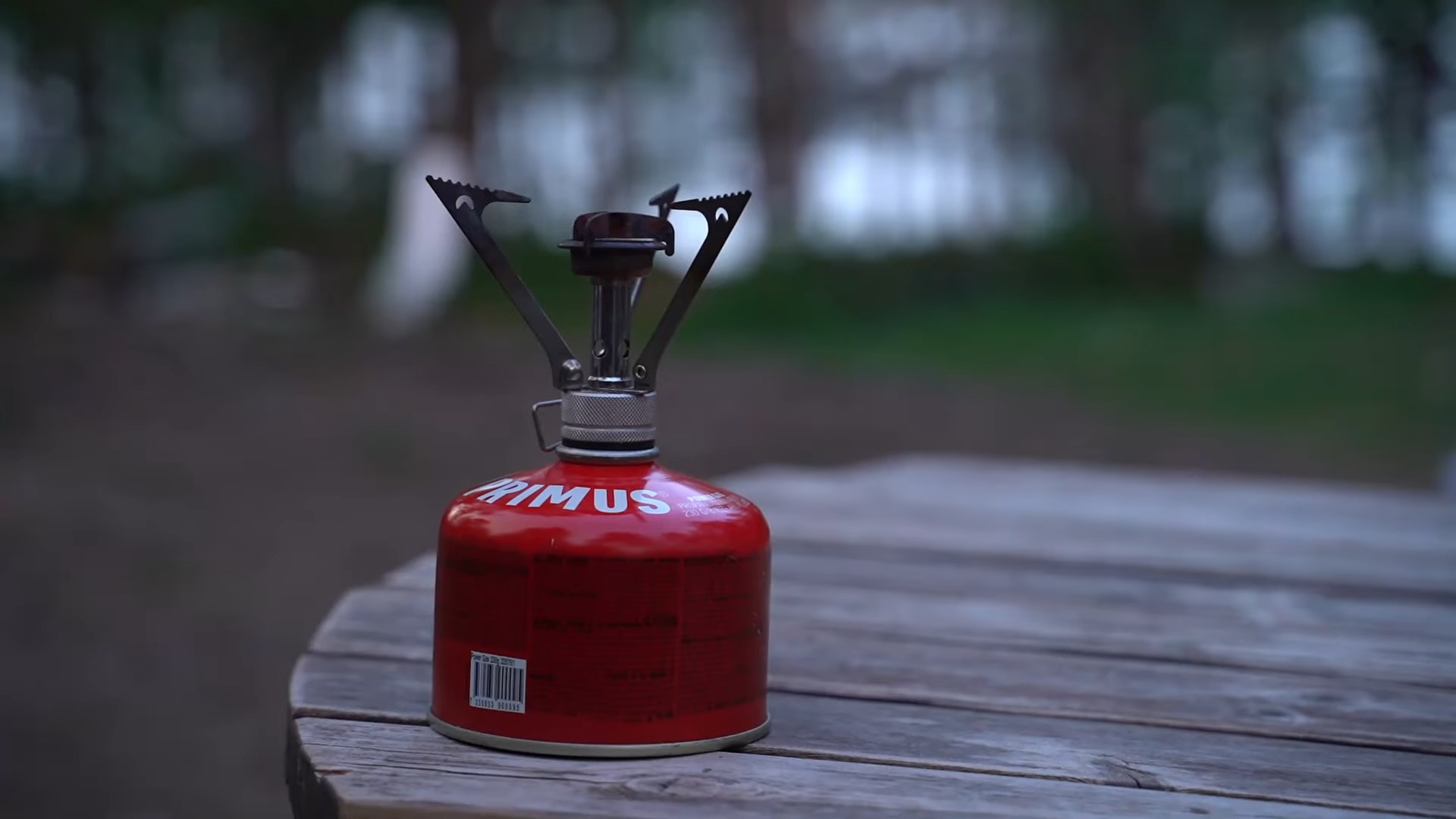
Now that I’ve presented you with my top picks, I want to provide you with some factors you should pay attention to before you purchase.
Different Stove Types
Backpacking stoves come in various types, each suited to different scenarios:
| Stove Type | Characteristics | Best For |
|---|---|---|
| Canister Stoves | Ideal for ease of use and maintenance | Solo travelers and small groups |
| Liquid Fuel Stoves | Versatile and perform well in cold weather | International travel with varied fuels |
| Alternative-fuel Stoves | Use fuel pellets, wood, or solid fuel tablets | Long-distance treks with limited resupply options |
Weight
The weight of your stove is a critical factor, especially for long-distance trekkers or solo hikers who are mindful of every ounce in their pack. Ultralight stoves are available, but they may trade off features for minimal weight. It’s important to balance the stove’s weight with its functionality and fuel efficiency to find the right fit for your journey.
- Ultralight Options: Ideal for those who count every gram, but may have limited features.
- Standard Weight: Offers a balance between durability and added features without being too heavy.
- Heavy-Duty: Typically more robust and may include additional features like better wind resistance or multi-fuel capability.
Burn Time
Burn time is a measure of how long a stove can operate on a set amount of fuel. This is crucial for planning your fuel needs, especially on extended trips. Liquid fuel stoves may offer longer burn times compared to canister stoves, but this can vary based on the stove design and the ambient temperature.
- Fuel Efficiency: Stoves with longer burn times are more fuel-efficient, requiring less fuel to be carried.
- Consistent Performance: Look for stoves that offer consistent burn times across different temperatures and altitudes.
Boil Time
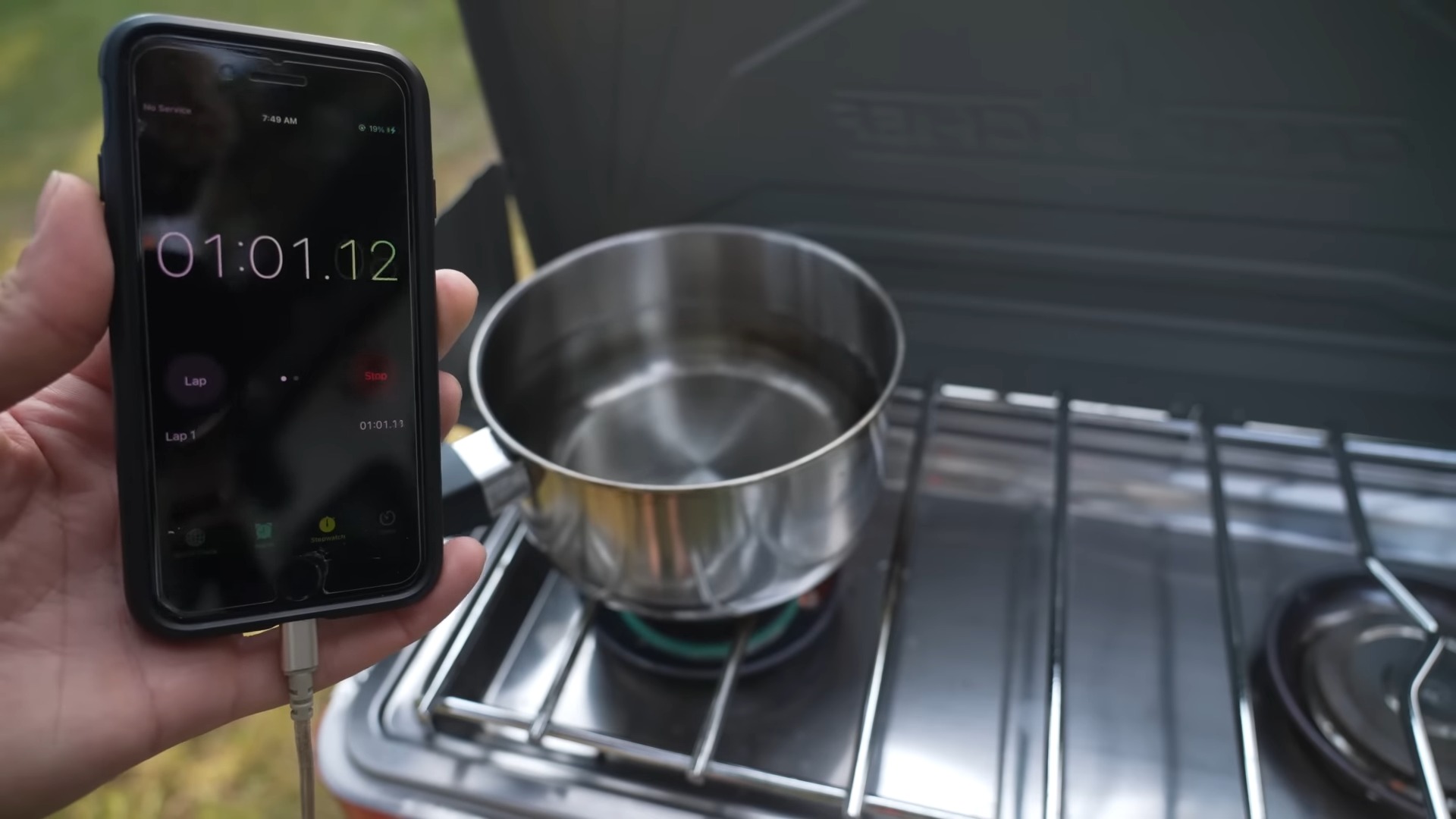
Boil time indicates how quickly a stove can boil water, which is a practical measure of its efficiency. Faster boil times mean less fuel consumption and a shorter wait for your meals. However, in windy or cold conditions, boil time can be affected, so it’s worth considering stoves with windshields or those designed to perform well in diverse environments.
| Factor | Impact on Boil Time |
|---|---|
| Wind | Can significantly increase boil time; windshields can mitigate this effect. |
| Cold | Low temperatures can slow down boil time; insulated cookware can help. |
| Altitude | Higher altitudes may increase boil time; pressure-regulated stoves can perform better. |
Simmering Ability
For those who enjoy more gourmet meals in the backcountry, the ability to simmer is important. Some stoves offer adjustable flame controls that allow for a range of cooking options beyond just boiling water. This feature can expand your culinary possibilities, turning basic camping fare into a more enjoyable dining experience.
- Flame Control: Adjustable controls for a low flame are essential for simmering.
- Cooking Versatility: A stove with good simmering ability allows for a wider variety of cooking techniques.
Stabilizers
Stabilizers are crucial for cooking on uneven surfaces, which are common in the backcountry. They ensure your stove stays level, reducing the risk of spills and uneven cooking. Some stoves come with built-in stabilizers, while others offer them as an accessory. These are important since they provide:
- Safety: Reduces the risk of tipping and potential burns or fires.
- Cooking Efficiency: Even heat distribution for better cooking results.
Tips for Optimal Performance
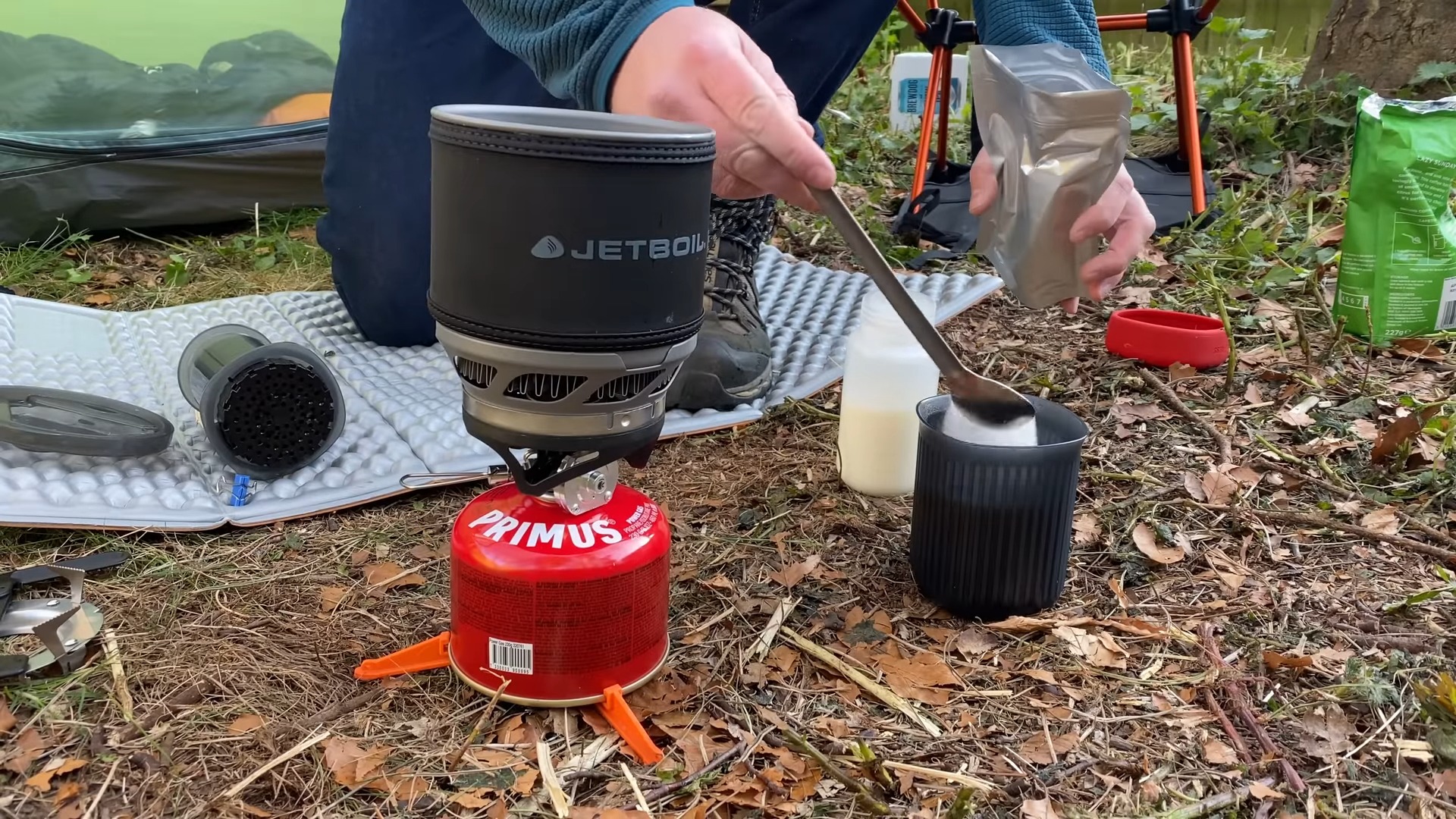
Now let us check some tips for optimal performance that can tell you a lot about the product itself.
Safety First
Cooking inside tents or enclosed spaces is dangerous due to the risk of carbon monoxide poisoning and fire. Always cook in a well-ventilated area and follow the manufacturer’s safety guidelines.
Maintenance
Regular maintenance, like cleaning, is key to stove performance. Check fuel lines and connections for leaks or damage before each trip. For liquid fuel stoves, regular cleaning of the jet and fuel line is necessary to prevent clogs and ensure efficient operation.
Fuel Efficiency
Maximize fuel efficiency by using a windscreen and insulating the base of the stove, especially in cold conditions. This can significantly reduce the amount of fuel you need to carry, making your pack lighter and your footprint smaller.
FAQs
Can I use a backpacking stove in dry, fire-prone areas?
Yes, you can use a backpacking stove in dry, fire-prone areas, but it’s crucial to check local fire regulations and use a stove with a controlled flame to prevent wildfires.
How much fuel should I carry for a week-long backpacking trip?
The amount of fuel you’ll need for a week-long trip depends on your stove’s efficiency and your meal plan, but a general guideline is about 4 to 8 ounces of fuel per day for cooking two hot meals.
Are there any silent backpacking stoves?
While no backpacking stove is completely silent, canister stoves tend to be quieter than liquid fuel stoves, with some models designed to minimize noise during operation.
What innovations have been made in backpacking stoves in recent years?
Recent innovations in backpacking stoves include improved fuel efficiency, reduced weight, integrated pressure regulators for consistent performance at altitude, and enhanced safety features like automatic shutoff mechanisms.
Closing Thoughts
As we wrap up this journey through the best backpacking stoves, I hope my experiences and insights have illuminated the path to choosing your ideal trailside kitchen. Remember, the best stove is the one that aligns with your specific needs, environmental conditions, and culinary preferences.
From ultralight canister stoves to versatile liquid fuel options, each has its place in the backpacker’s arsenal. As you gear up for your next adventure, consider not just the specs, but also the stories you’ll cook up with your trusty stove by your side. Until the next trail calls, this is Riley Johnson signing off.
Hey everyone, I’m Jared. Outdoor life wasn’t something I inherited. My parents had never been on a trail or in a tent. The outdoors found me another way. My best friend in middle school had a deep appreciation for nature, and his enthusiasm rubbed off quickly. We spent countless afternoons trekking through local trails, soaking up everything we could along the way.
That interest never faded. Through college, I kept hiking and spending as much time outdoors as possible. After junior year, I took a break from school to chase a dream: completing the Appalachian Trail. I made it through, but not without setbacks. I spent nearly every dollar I had on gear—some pieces were solid, but others let me down hard. One highly praised backpack barely survived a week. Watching money vanish like that stung. No one deserves to be misled.
Too many reviews felt like fluff. I knew something had to change. I started asking other hikers and survivalists what they looked for, what they struggled with, and what they wish they had known sooner. Over time, a clear picture formed. People didn’t just need help picking gear—they needed to avoid unnecessary purchases. They wanted clear answers, honest reviews, and practical advice.
That’s when GearDesciple began to take shape. It started as a passion project and became a trusted source for survival, hunting, and everyday carry insights.
As the site grew, so did the workload. Late one night, I called my brother Matt and pitched the idea of joining forces. He jumped in, and it turned out to be one of the best moves I’ve ever made. His dedication and insights strengthened the site, and together we’ve built something we’re proud to share.